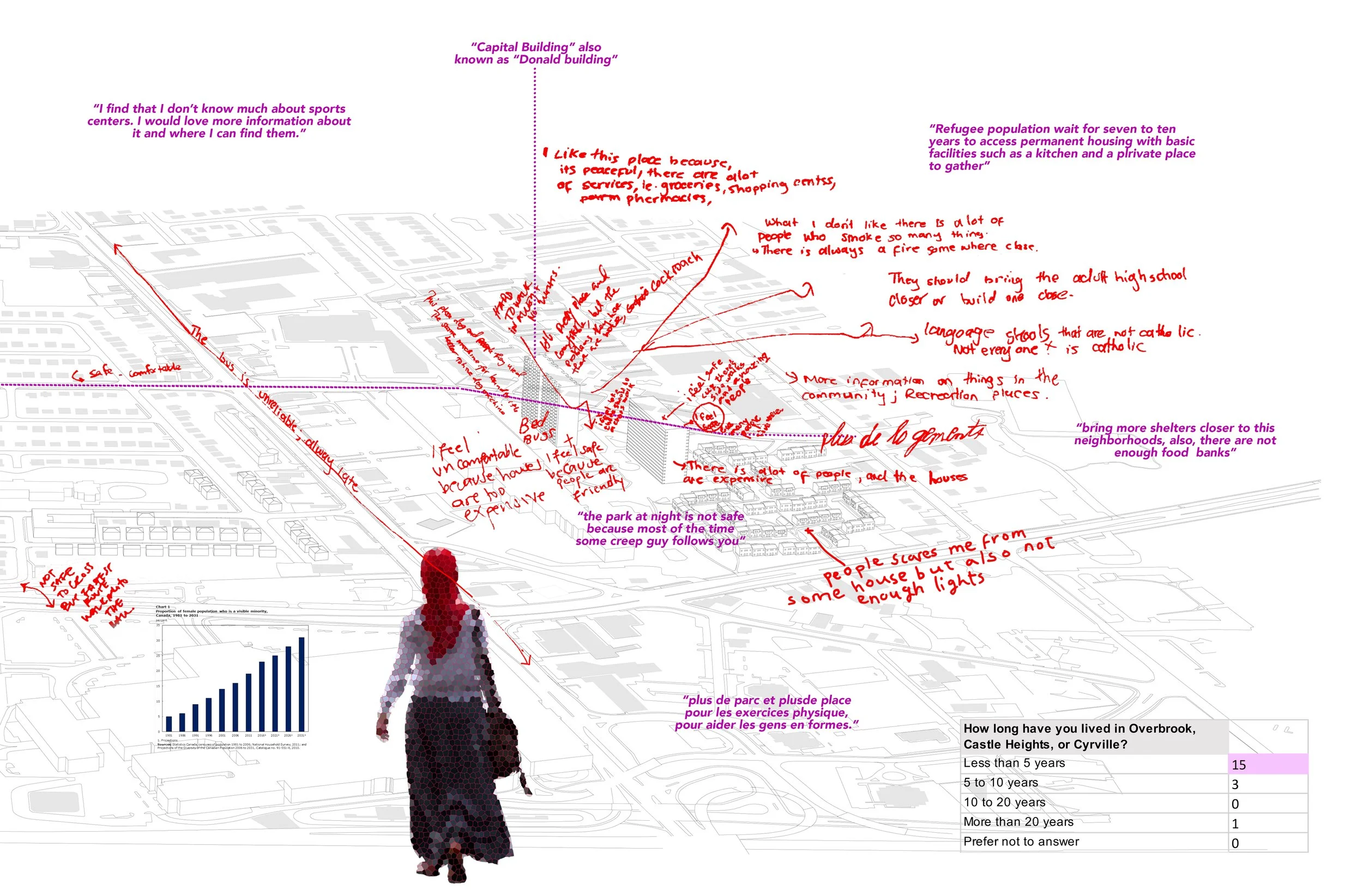RESEARCH PROJECT:
MAPPING WITH IMMIGRANT WOMEN
One key aspect in designing equitable cities is to understand the different embodied experiences of nonhegemonic populations. For immigrants, women and nonbinary people, racialized people, queer people and people with disabilities among others, the body is the site of a struggle that traditional urban design can frame as not belonging or being out of place. As a result, the study of their embodied experiences is crucial in questioning and redesigning current exclusionary cities. Conversely, prevailing documentation methods in urban studies have relied on abstract and disembodied representations of data. This project explores community mapping as a means to visualize the urban presence and complex experiences of exclusion and resistance non-hegemonic populations. The maps below were developed conjointly with community members who identified as immigrant or refugee women+ living in the urban areas of study. Community members were invited to overwrite the map of their neighborhoods with their urban experiences.
Rewriting the Santiago Municipality, Chile. CC: All rights reserved.
Rewriting Overbrook, Castle-Heights, and Cyrville. Ottawa, Canada. CC: All rights reserved.
MAP SECTION: OVERBROOK & CASTLE-HEIGHTS
Rewriting Overbrook and Castle-Heights (CC: All rights reserved)
MAP SECTION: CYRVILLE
Rewriting Cyrville (CC: All rights reserved)



